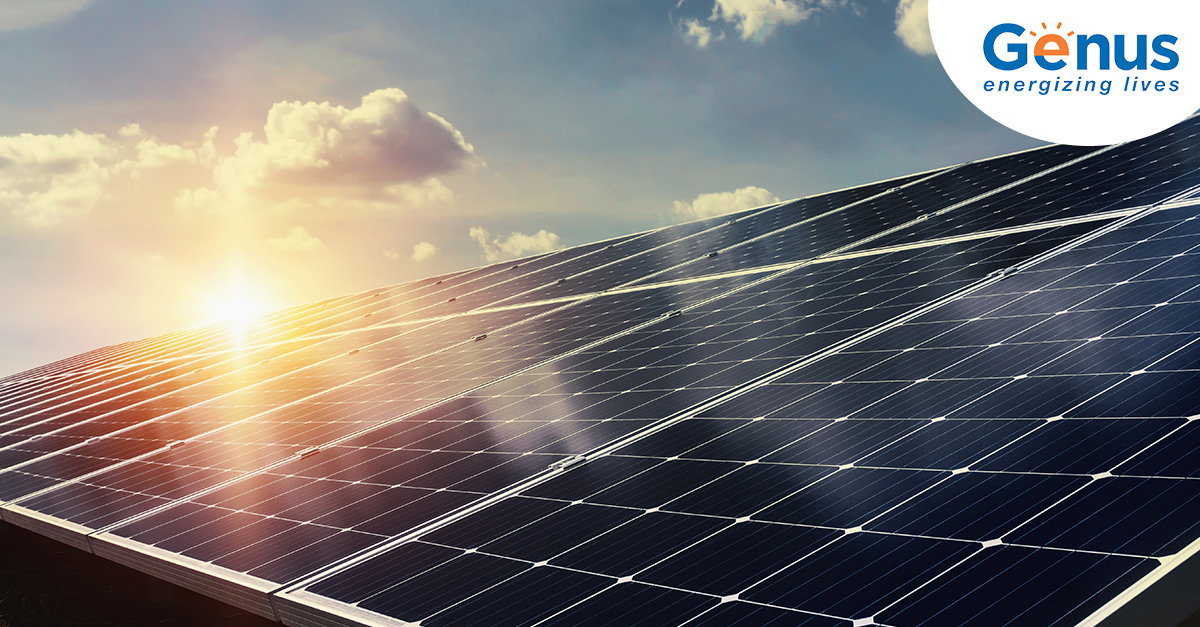
Solar is among the fastest-growing industries in the renewable energy sector in India, and for good reason. Apart from being a renewable energy source, solar energy is attractive even from a financial point of view. Furthermore, buyers can claim up to 30 per cent of the installation charge from the government. As a result, the importance of solar solutions has grown significantly in Indian towns and cities. However, before opting for a solar solution, especially panels, it is essential to know sufficiently about each type. This will help you to make an informed buying decision. So, here is what you need to know about the different types of solar panels.
Major Types of Solar Panels
Basically, there are three major types of solar panels available in the market today: Monocrystalline, Polycrystallineand Thin-film. Now, each type of panel has some pros and cons. So, read on to figure out what will match your specific requirements.
1. Monocrystalline Solar Panels
Despite being the oldest type of solar panel, a monocrystalline panel is the most developed. The panels comprise of monocrystalline solar cells in this case. They contain 40 of the monocrystalline cells and the cells are made out of pure silicon. Monocrystalline cells appear black due to the interaction between sunlight and pure silicon. However, buyers can choose from a variety of colours when it comes to back sheets and frames.
Here are Some of the Key Advantages of Monocrystalline Cells:
- Monocrystalline cells are placed in a pyramid pattern, which results in an increased surface area for better absorption of solar energy.
- These cells have higher efficiency (between 18 per cent and 24 per cent) than the other kinds of solar cells.
- The longevity of monocrystalline cells is up to 30 years.
- This solar panel type has greater heat resistance.
The only challenge associated with monocrystalline panels in their cost. Being the most efficient, these panels involve costly installations.
2. Polycrystalline Solar Panels
Polycrystalline panels (also known as Multicrystalline panels) consist of several crystals of silicon in each PV cell. These panels are the most popular among the three types of solar panels. Fragments of silicon crystals are melted and then cut into wafers to make these. The surface of polycrystalline panels looks like a mosaic and are square. The surface has a bluish tone as the panels are made up of several crystals of silicon.
Like monocrystalline panels, there are certain advantages associated with polycrystalline panels as well: –
- Polycrystalline panels are more eco-friendly than monocrystalline panels.
- These panels cost less as they have a simple manufacturing process.
- There’s less consumption of silicon during the making of polycrystalline panels.
The challenge with polycrystalline panels is that they have lower heat tolerance than monocrystalline solar panels. As a result, polycrystalline panels have lower efficiency at higher temperatures.
3. Thin-Film Panels
Thin-film panels belong to the second generation of solar cells. As the name suggests, thin-film panels are almost 350 times thinner than those that use silicon wafers. Another distinguishing feature of thin-film panels is that they are made of a variety of materials. For instance, a thin-film panel can be made from cadmium telluride, amorphous silicon or Copper Indium Gallium Selenide.
Being second-generation panels, there are certain advantages of thin-film panels, which contribute to its growing popularity: –
- Thin-film panels are flexible and can be made from various materials and not just silicon.
- This type of solar panel is much cheaper than the other two types of panels.
- Customers can save on installation costs as well due to its lightweight construction.
Thin-film panels have the lowest efficiency when compared to the other two types of solar panels. They offer an efficiency of up to 11 per cent.
Also Read: How Solar Energy Solves India’s Power Crisis!
Hence, you now have a fair idea about the diverse features and advantages of the different solar panel types available in the market. So, identify your requirements, compare prices, assess your budget, and then choose a panel accordingly.
